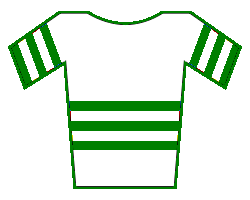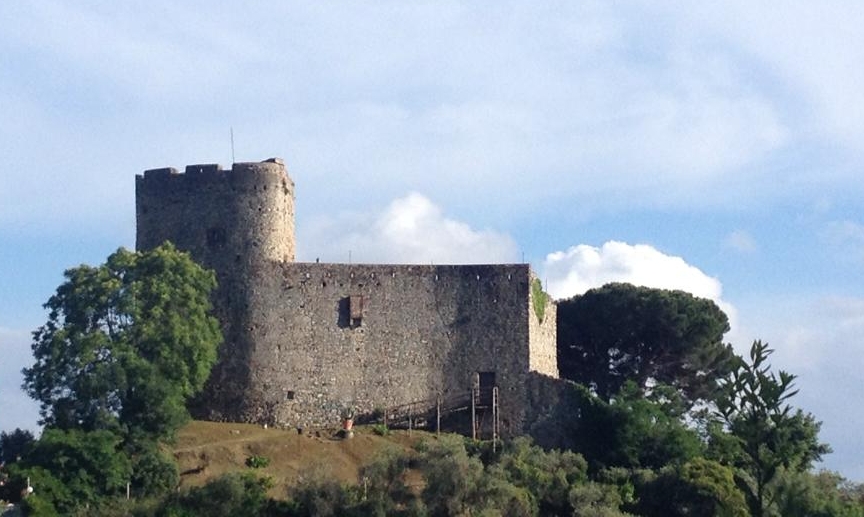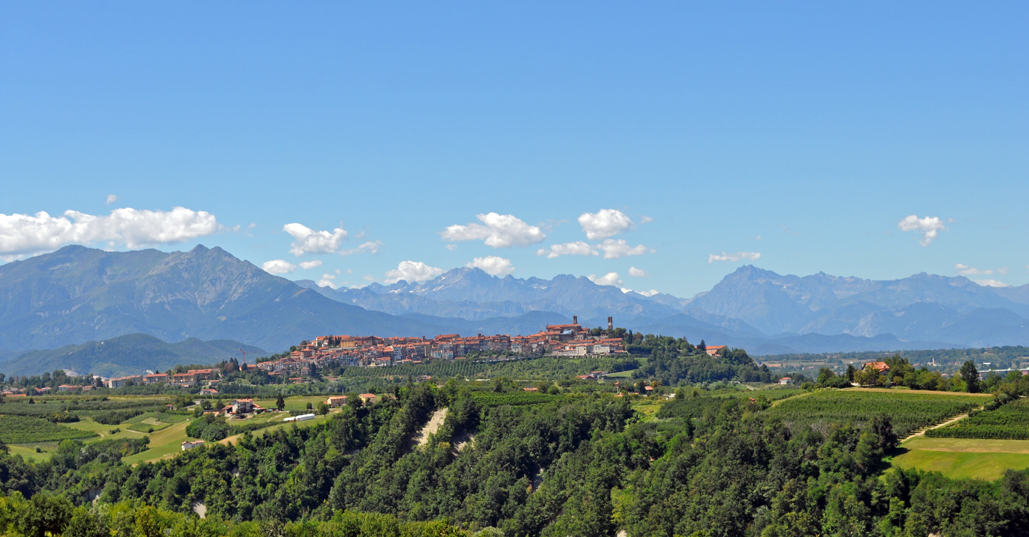|
1958 Giro D'Italia
The 1958 Giro d'Italia was the 41st running of the Giro d'Italia, one of cycling's Grand Tour races. The Giro started in Milan, on 18 May, with a stage and concluded back in Milan, on 8 June, with a leg. A total of 120 riders from 15 teams entered the 20-stage race, which was won by Italian Ercole Baldini of the Legnano team. The second and third places were taken by Belgian Jean Brankart and Luxembourgian Charly Gaul, respectively. Teams A total of 15 teams were invited to participate in the 1958 Giro d'Italia. Each team sent a squad of eight riders, so the Giro began with a peloton of 120 cyclists. Out of the 120 riders that started this edition of the Giro d'Italia, a total of 77 riders made it to the finish in Milan. The 15 teams that took part in the race were: Route and stages The route was released on 27 March 1958 in Saint Vincent. The photofinish was introduced to the race, which allowed the rider's times to be determined to the hundredth of a second. ... [...More Info...] [...Related Items...] OR: [Wikipedia] [Google] [Baidu] |
Ercole Baldini
Ercole Baldini (26 January 1933 – 1 December 2022) was an Italian cyclist. As an amateur he won an Olympic gold medal in the road race and the world title in the individual pursuit on track, both in 1956. . sports-reference.com Next year he turned professional, and in 1958 won the world title in the road race and the Giro d'Italia. He continued competing on track and won bronze medals in the individual pursuit at the world championships of 1960 and 1964. Biography Baldini was born at Villanova di Forlì. At 21 he set the for |
Salvador Botella
Salvador Botella Rodrigo (March 27, 1929 – December 18, 2006) was a Spanish road bicycle racer, who competed as a professional from 1953 to 1962. He won the ''Volta a Catalunya'' in 1953 and 1959. He participated in 19 Grand Tours, including eight editions of the Vuelta a España, seven of the Giro d'Italia, and four of the Tour de France. He won the Points classification in 1958 Vuelta a España. Major results ;1953 : 1st Volta a Catalunya ::1st Stage 3 ;1954 : 1st Stage 3 Euskal Bizikleta : 1st Overall Vuelta a Levante : 4th Overall Volta a Catalunya ;1955 : 1st Trofeo Jaumendreu : 1st Stage 10 Volta a Catalunya : 1st Stage 3 Tour des Pyrénées : 2nd Overall Vuelta a Andalucía ::1st Stage 8 : 8th Overall Giro d'Italia ;1956 : 1st Stage 4 Euskal Bizikleta : 2nd Trofeo Jaumendreu ;1957 : 2nd Overall Vuelta a Levante ::1st Stages 4 & 6 : 2nd Overall Volta a Catalunya ::1st Stage 8 : 3rd Overall Vuelta a La Rioja ::1st Stages 2 & 3 : 6th Trofeo Masferrer : 10th Overall Vuel ... [...More Info...] [...Related Items...] OR: [Wikipedia] [Google] [Baidu] |
Viterbo
Viterbo (; Viterbese: ; lat-med, Viterbium) is a city and ''comune'' in the Lazio region of central Italy, the capital of the province of Viterbo. It conquered and absorbed the neighboring town of Ferento (see Ferentium) in its early history. It is approximately north of GRA (Rome) on the Via Cassia, and it is surrounded by the Monti Cimini and Monti Volsini. The historic center of the city is surrounded by medieval walls, still intact, built during the 11th and 12th centuries. Entrance to the walled center of the city is through ancient gates. Apart from agriculture, the main resources of Viterbo's area are pottery, marble, and wood. The town is home to the Italian gold reserves, an important Academy of Fine Arts, the University of Tuscia, and the Italian Army's Aviation Command headquarters and training centre. It is located in a wide thermal area, attracting many tourists from the whole of central Italy. History The first report of the new city dates to the eighth cen ... [...More Info...] [...Related Items...] OR: [Wikipedia] [Google] [Baidu] |
Florence
Florence ( ; it, Firenze ) is a city in Central Italy and the capital city of the Tuscany Regions of Italy, region. It is the most populated city in Tuscany, with 383,083 inhabitants in 2016, and over 1,520,000 in its metropolitan area.Bilancio demografico anno 2013, datISTAT/ref> Florence was a centre of Middle Ages, medieval European trade and finance and one of the wealthiest cities of that era. It is considered by many academics to have been the birthplace of the Renaissance, becoming a major artistic, cultural, commercial, political, economic and financial center. During this time, Florence rose to a position of enormous influence in Italy, Europe, and beyond. Its turbulent political history includes periods of rule by the powerful House of Medici, Medici family and numerous religious and republican revolutions. From 1865 to 1871 the city served as the capital of the Kingdom of Italy (established in 1861). The Florentine dialect forms the base of Italian language, Stan ... [...More Info...] [...Related Items...] OR: [Wikipedia] [Google] [Baidu] |
Viareggio
Viareggio () is a city and ''comune'' in northern Tuscany, Italy, on the coast of the Tyrrhenian Sea. With a population of over 62,000, it is the second largest city within the province of Lucca, after Lucca. It is known as a seaside resort as well as being the home of the famous carnival of Viareggio (dating back to 1873), and its papier-mâché floats, which (since 1925), parade along the promenade known as "Passeggiata a mare", in the weeks of Carnival. The symbol of the carnival of Viareggio and its official mask is Burlamacco, designed and invented by Uberto Bonetti in 1930. The city traces its roots back to the first half of the 16th century when it became the only gate to the sea for the Republic of Lucca. The oldest building in Viareggio, known as Torre Matilde, dates back to this time and was built by the Lucchesi in 1541 as a defensive fortification to fight the constant menace of corsair incursions. Viareggio is also an active industrial and manufacturing centre; ... [...More Info...] [...Related Items...] OR: [Wikipedia] [Google] [Baidu] |
Guido Boni (cyclist)
Guido Boni (4 November 1933 – 28 June 2014) was an Italian racing cyclist. He won stage 7 of the 1958 Giro d'Italia The 1958 Giro d'Italia was the 41st running of the Giro d'Italia, one of cycling's Grand Tour races. The Giro started in Milan, on 18 May, with a stage and concluded back in Milan, on 8 June, with a leg. A total of 120 riders from 15 teams .... References External links * 1933 births 2014 deaths Italian male cyclists Italian Giro d'Italia stage winners Place of birth missing Sportspeople from the Metropolitan City of Florence Cyclists from Tuscany Tour de Suisse stage winners {{Italy-cycling-bio-1930s-stub ... [...More Info...] [...Related Items...] OR: [Wikipedia] [Google] [Baidu] |
Forte Dei Marmi
Forte dei Marmi () is a sea town and ''comune'' in the province of Lucca, in northern Tuscany (Italy). It is the birthplace of Paola Ruffo di Calabria, Queen of the Belgians from 1993 to 2013. Tourism is the principal activity of Forte dei Marmi's citizens. The population of the town, amounting to some 7,700, nearly triples during the summer, because of the hundreds of tourists who mainly come from Florence, Milan, Germany, and Russia. Forte dei Marmi is one of the major destinations which attract the Italian upper class. The city contains a gate built in a former bog, a historical artifact that relates to strategic planning by the ancient Roman army. Toponymy In Italian ''Forte dei Marmi'' means "Fort of the marbles". The town takes its name from the fortress that rises in the middle of the main square, built under Grand Duke Peter Leopold, who was to become Leopold II, Holy Roman Emperor, in 1788. The fortress was built to defend the coast from outer attacks, but in the 19t ... [...More Info...] [...Related Items...] OR: [Wikipedia] [Google] [Baidu] |
Silvano Ciampi
Silvano Ciampi (born 22 February 1932) is an Italian racing cyclist. He won stage 6 of the 1958 Giro d'Italia. Major results Sources: ;1952 : 1st Firenze - Mare ;1956 : 1st Firenze - Mare : 1st Gp Industria del Cuoio : 1st Coppa Lanciotto Ballerini ;1957 : 1st Gran Piemonte : 1st Gran Premio Industria e Commercio di Prato : 1st Trofeo Matteotti : 2nd Coppa Bernocchi : 5th Coppa Sabatini ;1958 : 1st Stage 6 Giro d'Italia : 3rd Giro della Provincia di reggio Calabria : 7th Giro di Toscana ;1959 : 1st Gran Piemonte : 1st Giro di Romagna : 1st Giro dell'Appennino : 2nd Trofeo Matteotti : 8th Giro dell'Emilia : 9th Milano-Vignola ;1960 : 9th Giro di Lombardia ;1961 : 1st Stage 14 Giro d'Italia : 4th Milano-Vignola : 5th Overall Roma–Napoli–Roma ::1st Stages 3 & 6a : 6th Overall Tre Giorni del Sud : 6th Giro di Romagna : 7th Gran Piemonte : 10th Tre Valli Varesine ;1962 : 1st Giro di Campania : 5th Trofeo Matteotti ;1963 : 2nd Giro dell'Emilia : 3rd Giro del Lazio : 5th Tre V ... [...More Info...] [...Related Items...] OR: [Wikipedia] [Google] [Baidu] |
Chiavari
Chiavari (; lij, Ciävai ) is a comune (municipality) in the Metropolitan City of Genoa, in Italy. It has about 28,000 inhabitants. It is situated near the river Entella. History Pre-Roman and Roman Era A pre-Roman necropolis, which dates from the 8th to 7th century BC, has been uncovered in the area where Chiavari is located now. Chiavari grew up on the traces of a Roman camp on the Via Aurelia. Medieval Era A castle was constructed in 1147. The old town contains numerous arcades and buildings from the 13th century, including a castle, several mansions, and the nearby Church of San Salvatore di Lavagna, which was founded in 1224 by Innocent IV. The cathedral was rebuilt in 1613. Known famously as a center of ancient humanistic tradition, Chiavari has a public library with a collection of manuscripts and incunabula. After the discovery of the conspiracy of the Fieschi, in 1542, and the capture of Chiavari by the Counts of Lavagna, the town suffered much, being associat ... [...More Info...] [...Related Items...] OR: [Wikipedia] [Google] [Baidu] |
Alfredo Sabbadin
Alfredo Sabbadin (20 January 1936 – 26 March 2016) was an Italian professional racing cyclist. He rode in two editions of the Tour de France The Tour de France () is an annual men's multiple-stage bicycle race primarily held in France, while also occasionally passing through nearby countries. Like the other Grand Tours (the Giro d'Italia and the Vuelta a España), it consists .... References External links * 1936 births 2016 deaths Italian male cyclists Cyclists from the Metropolitan City of Venice {{Italy-cycling-bio-1930s-stub ... [...More Info...] [...Related Items...] OR: [Wikipedia] [Google] [Baidu] |
Mondovì
Mondovì (; pms, Ël Mondvì , la, Mons Regalis) is a town and ''comune'' (township) in Piedmont, northern Italy, about from Turin. The area around it is known as the Monregalese. The town, located on the Monte Regale hill, is divided into several '' rioni'' (ancient quarters): Piazza (the most ancient), Breo, Pian della Valle, Carassone, Altipiano, Borgato and Rinchiuso, lower, next to the Ellero stream, developed from the 18th century when industries developed in Mondovì and when it was reached by the railway. The Funicolare di Mondovì, a funicular railway reopened in 2006, links Breo with Piazza. It is the seat of the Roman Catholic Diocese of Mondovì. History Founded on a hilltop in 1198 by survivors of the destroyed village of Bredolo and by inhabitants of the neighboring villages of Vico (now Vicoforte), Vasco (now Monastero di Vasco) and Carassone (which was abandoned after the founding of the new city): an independent comune named ''Ël Mont ëd Vi'', m ... [...More Info...] [...Related Items...] OR: [Wikipedia] [Google] [Baidu] |
Turin
Turin ( , Piedmontese: ; it, Torino ) is a city and an important business and cultural centre in Northern Italy. It is the capital city of Piedmont and of the Metropolitan City of Turin, and was the first Italian capital from 1861 to 1865. The city is mainly on the western bank of the Po River, below its Susa Valley, and is surrounded by the western Alpine arch and Superga Hill. The population of the city proper is 847,287 (31 January 2022) while the population of the urban area is estimated by Eurostat to be 1.7 million inhabitants. The Turin metropolitan area is estimated by the OECD to have a population of 2.2 million. The city used to be a major European political centre. From 1563, it was the capital of the Duchy of Savoy, then of the Kingdom of Sardinia ruled by the House of Savoy, and the first capital of the Kingdom of Italy from 1861 to 1865. Turin is sometimes called "the cradle of Italian liberty" for having been the political and intellectual centre of t ... [...More Info...] [...Related Items...] OR: [Wikipedia] [Google] [Baidu] |





